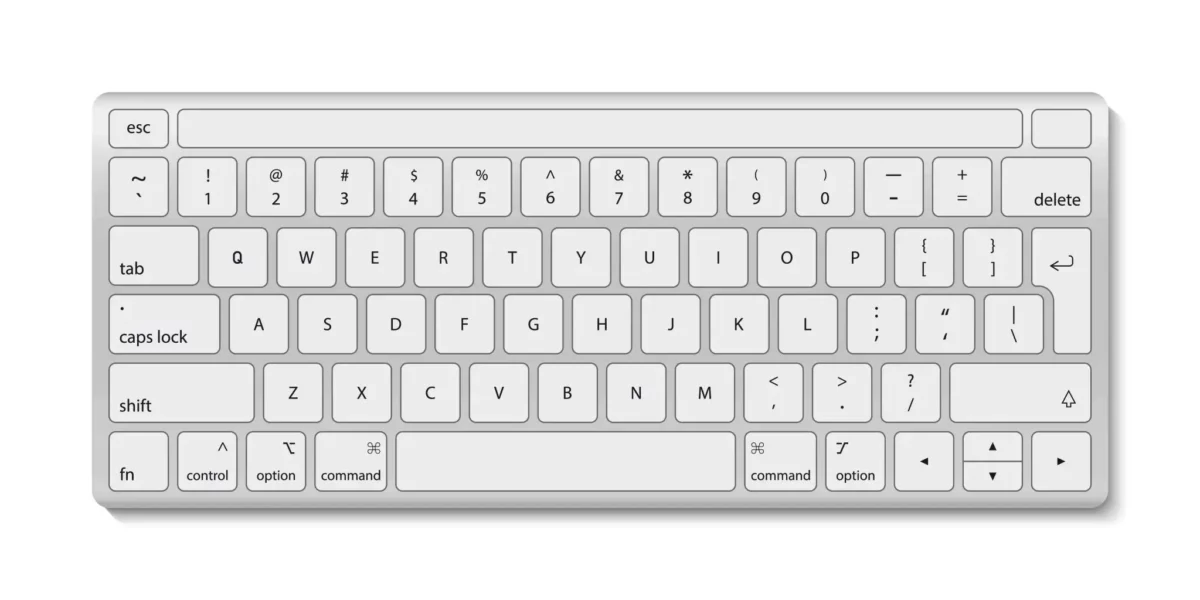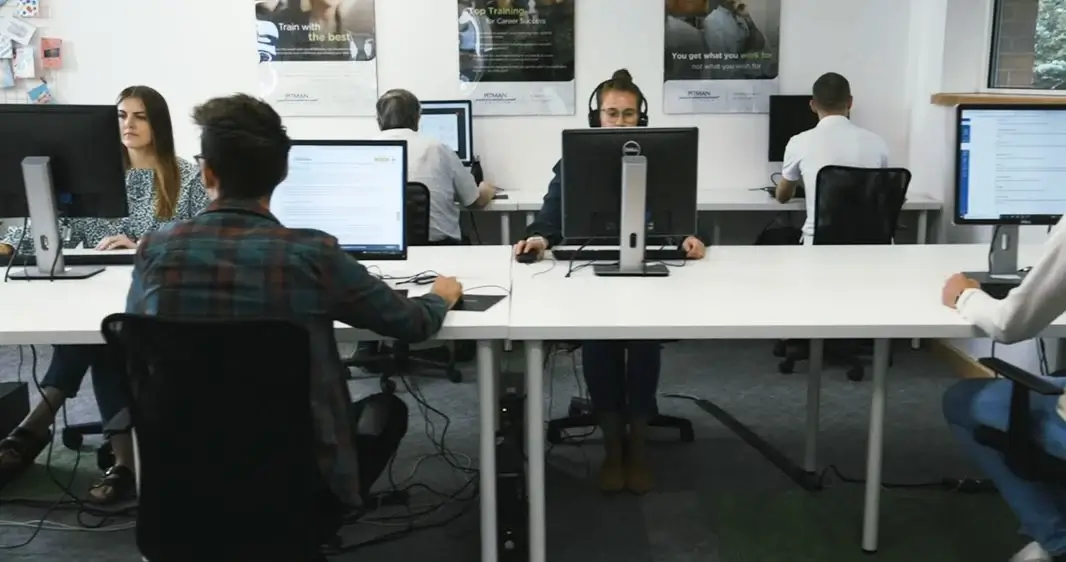Keyboards – we use them all the time but may take them for granted. But in fact, they are essential to our careers and everyday life. From the design to the layout, advancements throughout typewriter history have led to the functioning tool we all know today.
To highlight this impressive tool, we will be sharing some interesting facts about qwerty keyboard history, the fastest typing speeds, and more. Read on to find out some surprising information you might not know about keyboards.
Plus, test your typing speed for free to see how fast you are! If you want to improve your typing and other critical work skills, Pitman Training programmes and courses will set you up for success! Without further ado, here are 9 fun typing and keyboard facts.

Keyboard – An Everyday Object with Significant History
1. Who Invented the Keyboard?
The Qwerty keyboard that we use today is attributed to Christoper Latham Sholes. This American inventor first showed off the keyboard on July 1, 1874. Sholes organised the original layout alphabetically. However, this first layout allowed for typing common letter combinations too quickly and led to jammed keys. After this realisation, Sholes created the new Qwerty design to prevent commonly used letters from sticking together.
2. Evolution of the Keyboard as We Know It
Throughout Qwerty keyboard history, there have been many attempts to rival the Qwerty model, including the Dvorak keyboard. Augustus Dvorak designed this model in 1936. He said that it would put less stress on the typists’ hands. However, most people were already trained to use the Qwerty keyboard layout by that time. So, the Dvorak keyboard didn’t become the norm.
Throughout Qwerty keyboard history, technology has constantly changed. From typewriters to computers to smartphones – yet, the Qwerty keyboard has stood the test of time.
3. British vs. American Keyboards

Although the UK Qwerty keyboard layout is the same style keyboard used in the U.S., some minor differences in symbol placement could be confusing for typists. Most notably, the @ symbol on a British keyboard is to the left of the enter key, whereas in the U.S., it is above the 2.
The British keyboard also has a pound sign to represent the U.K. currency. And, the British keyboard has a key for the Euro currency symbol. Because of these factors, the UK layout has 1 more key than its U.S. counterpart.
A Modern Necessity – All About Typing
4. Typing in the Workplace
In the 1870s, typewriters came onto the scene and revolutionised the workplace. Prior to the machines, scribes had to prepare correspondence by hand. It was time-consuming, and the typewriter became known as a time-saving invention. It also opened the door for women in the office, as companies hired and trained them as typists.

5. What is touch typing?
Touch typing is a specific method of typing where the typist is able to use the keyboard without looking at the keys. Using this method, professional typists gain speed and accuracy. Touch typing training involves working on muscle memory so the brain can automatically tell the fingers which keys to type.
6. Other Typing Styles
As typewriters became more common in the workplace, different typing styles developed. While many typists use the touch typing methods, there are other approaches, such as:
Hunt and peck
Also known as the two-finger typing method, the typist searches for the keys and types them out. With this typing style, the accuracy rate is low because the typist is watching the keyboard, not the screen.
Buffering
This style of typing requires the typist to read and memorise small sections of the text and then type it. However, it’s not the best approach to improve your typing speed.
Hybrid
Combining touch typing and hunt and peck, a typist using the hybrid style will memorise the keyboard and focus on the screen. The difference is they don’t use all their fingers to type on the keyboard. Some may use two, while others may use five or six.

Speedy Keys – Typing Speeds
7. Average Typing Speed
As more and more people become accustomed to using computers and keyboards on a daily basis, average typing speeds have improved. The average speed is about 40 words per minute (wpm). However, some studies have noted that women average 37 wpm and men 44 wpm.
It’s also important to note that mistakes happen, and they can slow down typing speed. The average typist will make eight mistakes for every 100 words.
8. Who is the Fastest Typist in the World?
Officially, the fastest typist in the world is Barbara Blackburn, who has reached top speeds of 212 wpm on a Dvorak keyboard. She was able to maintain a speed of 150 wpm for 50 minutes. Barbara has held this record since 2005.
There are also many competitions every year that aim to find out who is the fastest typer in the world. Xeogran (his username) from Poland claims the unofficial title with a speed of 217 wpm with 99.16% accuracy
9. How to Improve your Typing Speed
If you’re looking to get better and faster at typing, there are some ways you can improve your speed. The first step is to get to know your Qwerty keyboard layout. Being familiar with where the keys are can help you become a faster typist as you won’t be looking down at your fingers or the keyboard. One of the best ways to learn proper techniques for typing is to take one of our touch typing courses.

As you get to know your keyboard, you’ll also want to use the proper typing position, so you don’t get tired or sore. The best position for fast typing speeds is to sit straight up with your feet on the floor and your elbows at a 90-degree angle. This can prevent any strain on your hands or wrists while you type.
If you’re already skilled at touch typing but want to improve your typing speed and accuracy, you can also study in Typaz speed training or a Typaz professional training programme. These programmes can help you develop your speed and accuracy, making you more productive at work. Also, you can try our Shorthand Course.
Wherever you are with your typing skills, there is always room for advancement. Keep practising and hone your skills with typing training, and maybe you’ll be able to make the fastest typist list.
Speedy Keys Challenge
We hope you enjoyed our in-depth look at typing. Do you think you have what it takes to be the fastest typist in the world? We want to see just how good your typing skills are! Join us in our search for the fastest typist with our Speedy Keys competition. Submit as many entries as you’d like, and see if your skills are at the head of the pack!



















